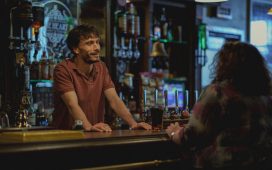Music is supposed to have charms which soothe the savage breast. Many people think the final word of the phrase is “beast,” and the documentary further blurs the line. The early ‘90s music artists were anti-misogynist, anti-racist, anti-homophobic and radically informed. Happening at the end of the Clinton era, when MTV pitted boy bands and pop girls against nü-metal rockers, a fur-coated Kid Rock could call Monica Lewinsky a ho and pass it off as a political statement.
Toxic masculinity’s dirty sister framed Britney Spears as a “Girls Gone Wild” extra, and magazines like Maxim and FHM encouraged the idea young men could shout “show your tits” to Rosie Perez without getting bitch-slapped, the documentary posits. Only three women were invited to perform at the weekend-long, two-stage festival: Jewel, Alanis Morrissette, and Sheryl Crow. “I’m baffled how it went from the progressive, enlightened values of Kurt Cobain and Michael Stipe to misogyny and homophobia and the rape-frat boy culture that was at Woodstock ‘99,” Moby ponders in the film.
Of course, none of wouldn’t have happened if it wasn’t all pre-staged. This is where Price dips into the era’s obsession with paranoia. It was the end of the millennium, the Columbine shootings had happened, and the Y2K bug was coming. It was finally time to party like it’s 1999. “Really, the biggest problem was that MTV set the tone,” organizer John Scher says in an interview.
But he downplays it, like he might have been warned by Cigarette Smoking Man from The X-Files. “There’s no question that a few incidents took place. But if you go back in the records of the police and state police and stuff, we’re not talking about 100. Or even 50. We’re talking about 10. I am critical of the hundreds of women that were walking around with no clothes on, and expecting not to be touched. They shouldn’t have been touched, and I condemn it. But you know, I think that women that were running around naked, you know, are at least partially to blame for that.”
Partial blame is all the rage in Woodstock 99: Peace, Love, and Rage. The documentary points out how history paints the original Woodstock like it really was a return to the garden, with peace and love and former flower children having babies to Santana’s “Soul Sacrifice.” But music journalist Steven Hyden reminds us about a group of disgruntled shoppers called “’The Up Against the Wall Motherfuckers,” who didn’t like food prices and burned dozens of stands down.
After Woodstock ’99 grounds started smoking when the candles handed out for a vigil for Columbine victims became torches to burn the place down, the documentary says Rome Mayor Joseph Griffo asked Anthony Kiedis to douse the crowd’s misplaced enthusiasm. The Red Hot Chili Peppers launched into a scorching rendition of Jimi Hendrix’s “Fire.” History blames bands like Limp Bizkit, Korn, and Rage Against the Machine for the destruction. But really, the artistic decision of that song to those circumstances is a no-brainer. “Smoke on the Water” would have been too easy. “Disco Inferno” would have been too obvious.













